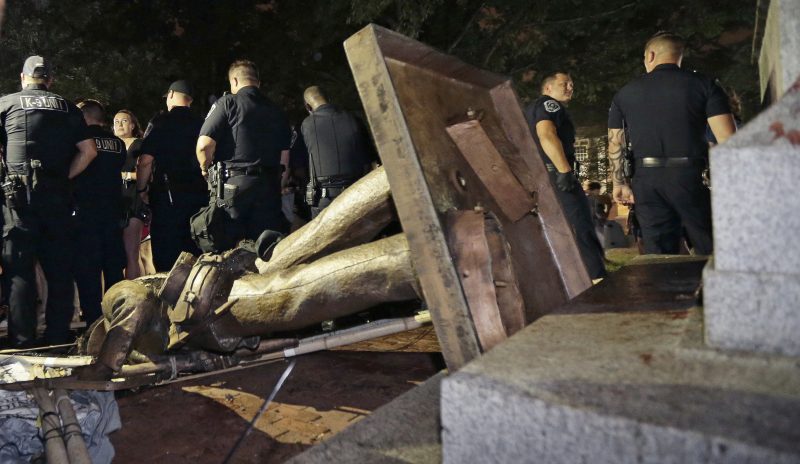
It is in the nature of college admissions that some people are accepted and some not. There aren’t a lot of zero-sum determinations in our society, but this is one of them. If only one slot is left and you get it, I do not. That’s how it goes.
On Thursday, the Supreme Court determined that one process that universities have used to determine who should get those slots cannot be maintained. Specifically, a majority of justices determined that systems that consider the race of applicants to decide on acceptance must be curtailed.
In doing so, they simply shifted where the racial determination in the system sits.
The process of applying affirmative action to college admissions has long been clunky and, particularly recently, not terribly popular. In part, this is a function of how it works, that Black or Hispanic applicants are given — or believed to be given — an advantage solely on the basis of race that muffles more important considerations like academics. In part, it’s because affirmative action is an effective political wedge for use in the often-superficial political conversation about systemic racism that’s been elevated by the Black Lives Matter movement.
That the court would reject affirmative action programs was not a surprise, given its current ideological composition. Also, the programs at issue, at Harvard University and the University of North Carolina, demonstrated some of the clunkiness in application that reduced the political cost of striking the policies down. It is nonetheless important to recognize the predictable effects of the decision.
In a furious dissent, Justice Ketanji Brown Jackson hypothesized about two prospective applicants to UNC named John and James. John is White, the seventh generation of North Carolinians to attend the school. James is Black and would be the first.
“Most likely, seven generations ago, when John’s family was building its knowledge base and wealth potential on the university’s campus, James’s family was enslaved and laboring in North Carolina’s fields,” Jackson wrote. She walked through the ways in which James’s Black family would have suffered from systemic obstacles to attending college over each of the subsequent generations. “[A]t bare minimum,” she concluded, “one generation ago, James’s family was six generations behind because of their race, making John’s six generations ahead.”
There’s one slot. If John gets it — because race is not considered, but legacy attendance is — then James does not. Race still played a role in that determination, but it was the silent, obfuscated role that defines systemic racism. The role of race is shunted from overt consideration by admissions staff to the disadvantages that permeate American culture.
Jackson delineates the manifestations of those disadvantages in her dissent, from lower representation in professional fields to disparate health outcomes to gaps in educational achievement, income and wealth. She doesn’t outline the ways in which discrimination affects those things, but she could have: from enduring racism in the process of buying a home to discrimination against job applicants with names that are perceived as Black. That sits on top of and perpetuates economic gaps between Black Americans in particular and other groups.
“The race-based gaps that first developed centuries ago are echoes from the past that still exist today,” Jackson writes. “By all accounts, they are still stark.”
What’s more, pushing college admission further out of reach for disadvantaged groups means reducing future opportunities — and thereby perpetuating and exacerbating those gaps.
On Wednesday, Monmouth University released polling that shows how Americans diverge in their perceptions of the role race plays in the United States. Non-White people, for example, are 25 percentage points more likely than Whites to say that discrimination is a problem in the United States. Liberals are 50 percentage points more likely to express that view.
Whites and conservatives also are far more likely to say that too much attention is being paid to issues of diversity and inclusion. In other polling, White Republicans are more likely to identify White people as targets of discrimination than they are to say the same of Black people. This is in part because of things like affirmative action, which is understood as a manifestation of a perceived disadvantage for Whites instead of as an attempt to address the advantage that Whites — collectively, if not individually — already enjoy.
In a separate dissent, Justice Sonia Sotomayor made a related point.
“Ignoring race will not equalize a society that is racially unequal,” she wrote. “What was true in the 1860s, and again in 1954, is true today: Equality requires acknowledgment of inequality.”
Unless you recognize that race-based advantages exist, you can’t rectify them. And, unless you recognize that race-based advantages exist, efforts to rectify them are instead seen as a granting of advantages.
This is a fundamental component of the American political conversation, something that Monmouth’s polling indicates that most Americans recognize. The fight over the extent and presentation of racism and discrimination is at the heart of a great number of partisan fights, including over policing, education and health care. The shifting demographics of the population has amplified the pressure perceived by White Americans and has given politicians like Donald Trump an opportunity to appeal to racial insecurity.
The idea that racism persists in the country is often rebutted by pointing — ironically — to the Rev. Martin Luther King Jr.’s dream that Black Americans might someday not be judged by the color of their skin. This objectively unachieved ideal is used as a cudgel against discussions of discrimination: What happened to advocating a colorblind society? But, as Jackson said, equality requires acknowledgment of inequality.
Sotomayor made her own references to King, noting that the equal protection clause of the 14th Amendment — the auspices of which were used by the court majority to throw out the affirmative action policies — was intended to create a nation where “the sons of former slaves and the sons of former slave owners [are] able to sit down together at the table of brotherhood.” That includes tables in dining halls at prestigious universities.
It was Jackson, though, who summarized the obtuseness of the right’s formulation most forcefully.
“With let-them-eat-cake obliviousness, today, the majority pulls the ripcord and announces ‘colorblindness for all’ by legal fiat,” she wrote. “But deeming race irrelevant in law does not make it so in life.”
University admissions are colorblind only at the last mile. Every applicant arrives in front of admissions officers with an application informed by their own background, a background that is often influenced by the advantages or disadvantages that accompany their racial identity. The Supreme Court’s decision removes a tool aimed — however imprecisely — at recognizing that reality.
It eliminates the consideration of race at that moment but does nothing about the way race affects college admission at every point before.


Comments are closed.